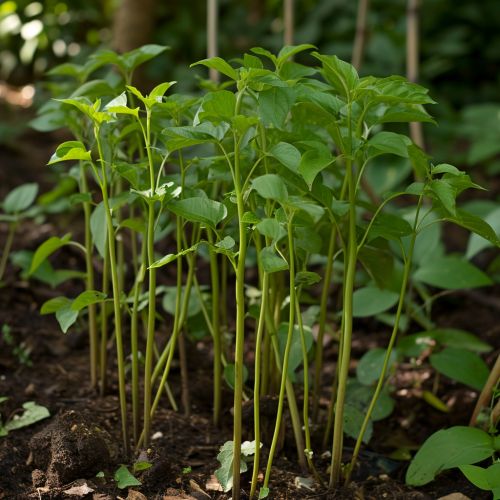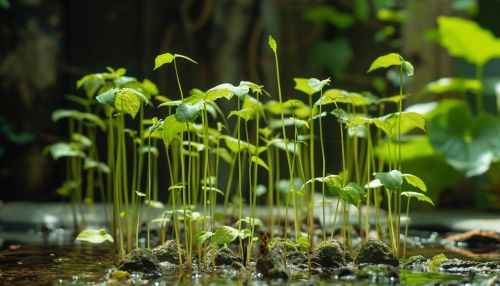Shade Avoidance Syndrome
Introduction
Shade Avoidance Syndrome (SAS) is a complex adaptive response exhibited by plants when they perceive a reduction in the quantity or quality of light due to the presence of neighboring vegetation. This response is characterized by a series of morphological and physiological changes aimed at enhancing light capture, including increased stem and petiole elongation, upward leaf movement (hyponasty), early flowering, and reduced branching more on plant structures. The syndrome is triggered by changes in the ratio of red to far-red (R:FR) light, which plants perceive through specialized photoreceptors known as phytochromes more on phytochromes.


Photoreceptors and Light Perception
Plants have evolved a sophisticated system of photoreceptors to perceive and respond to changes in their light environment. The most important of these in relation to SAS are the phytochromes, a family of biliprotein photoreceptors that exist in two interconvertible forms: the red light-absorbing Pr form and the far-red light-absorbing Pfr form. The ratio of Pr to Pfr is a crucial determinant of SAS, with a low R:FR ratio signaling the presence of neighboring vegetation and triggering the shade avoidance response.
Molecular Mechanisms of Shade Avoidance
The molecular mechanisms underlying SAS involve a complex network of signaling pathways and gene regulatory networks. Upon perception of shade signals, phytochromes trigger a cascade of molecular events, including changes in the levels of plant hormones such as auxin and gibberellins more on plant hormones. These hormonal changes drive the morphological changes characteristic of SAS, such as stem elongation and hyponasty.
Ecological and Agricultural Implications
SAS has significant implications in both natural and agricultural ecosystems. In natural ecosystems, SAS can influence plant community structure and dynamics, as well as plant-pollinator and plant-herbivore interactions. In agricultural systems, SAS can negatively impact crop yield and quality, as crops exhibiting SAS allocate more resources to stem growth at the expense of reproductive growth. Understanding and manipulating SAS could therefore have important applications in crop improvement.
